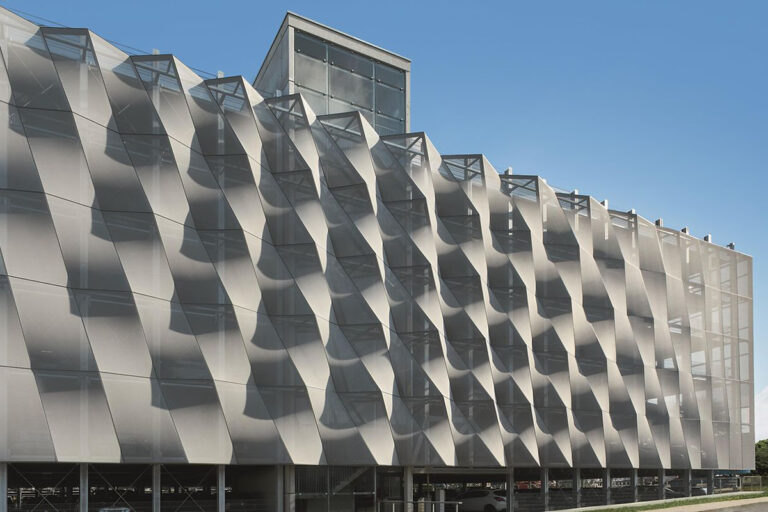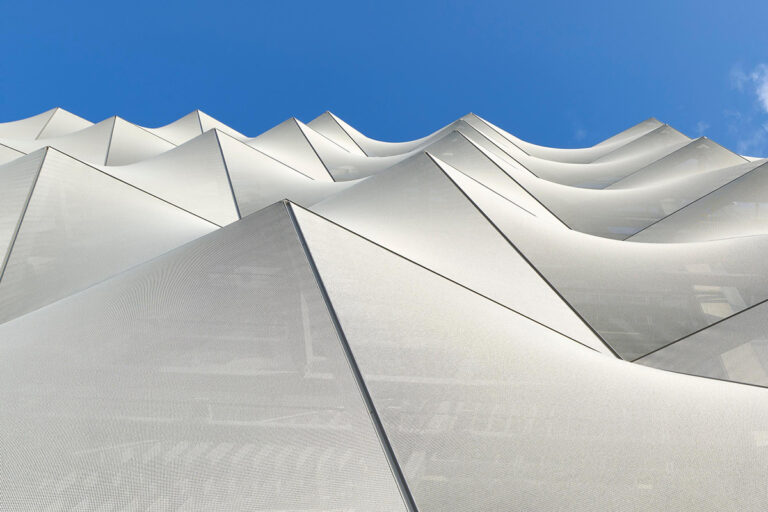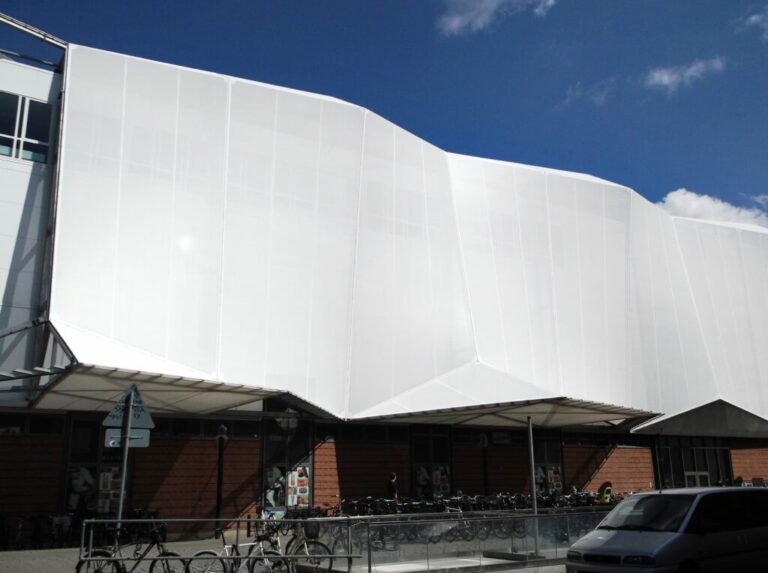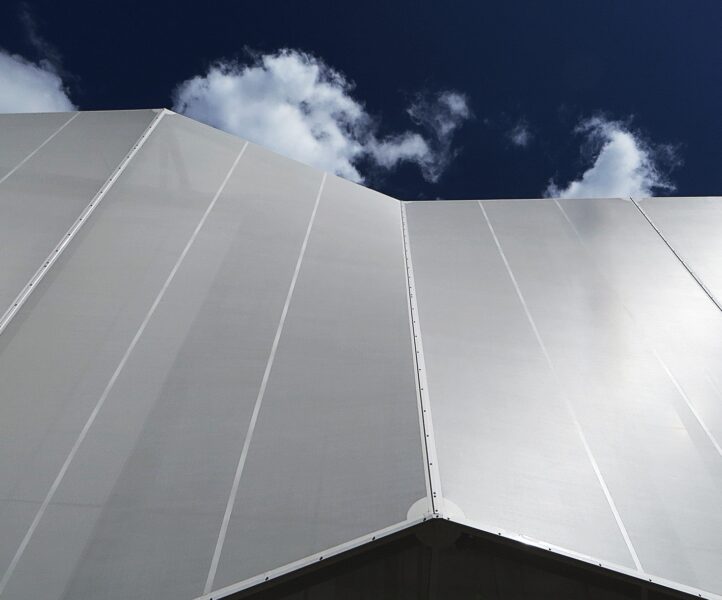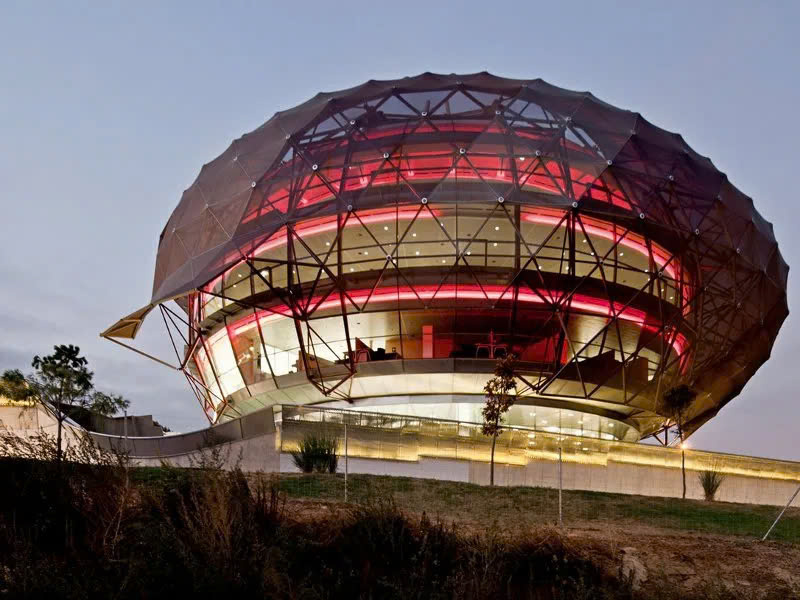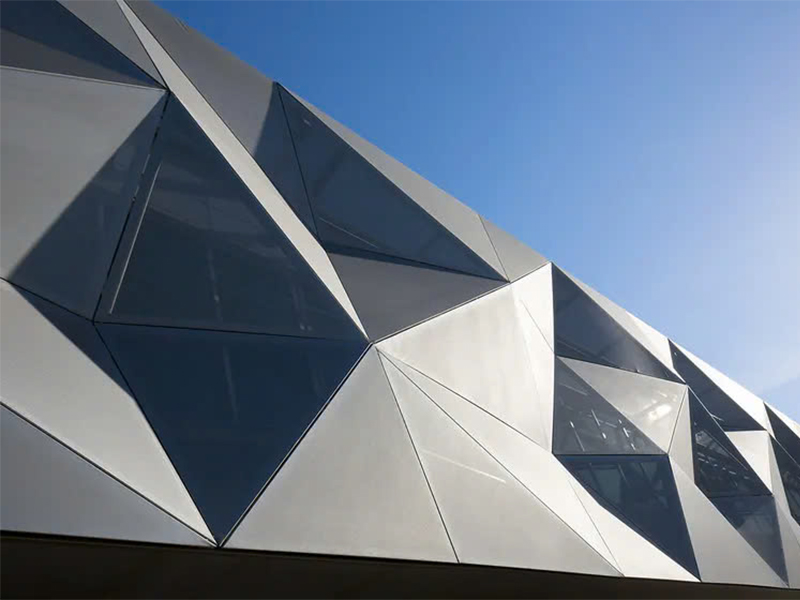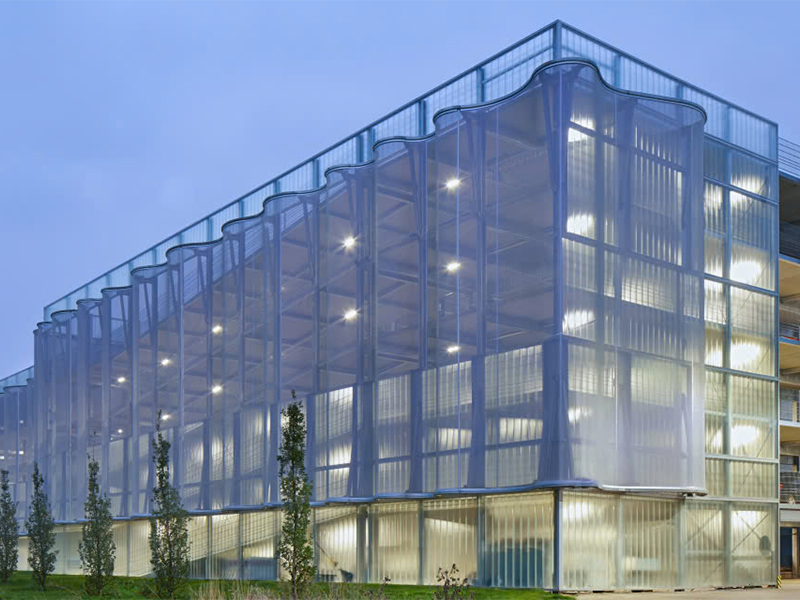Current situation and solution: Fabric Facade effectively prevents heat for architectural works
Heat-resistant Fabric Facade is an advanced facade solution, specifically designed to minimize the impact of high temperatures on buildings. This solution uses high-tech fabrics with superior heat reflection and insulation to maintain a stable temperature inside the building, especially suitable for areas with high solar radiation intensity or tropical climate.
Technical Requirements & Context Analysis
In the context of climate change and increasing urbanization, architectural works face great challenges in controlling internal temperatures, especially in hot seasons. The common practice is to use traditional facade materials such as glass or metal, which have high thermal conductivity, leading to the greenhouse effect and significantly increasing the energy demand for air conditioning systems. The technical requirement is to have a facade solution that not only ensures aesthetics but also has the ability to effectively insulate, reduce the heat load on the building and contribute to the goal of saving energy, towards sustainable architecture.
Technical Solutions and Implementation Process
The Fabric Facade heat-resistant solution is developed based on the principles of material mechanics and heat transfer, using advanced materials and construction processes.
Material Selection and Operating Principle
The Fabric Facade thermal insulation solution uses high-tech fabrics such as ETFE membranes, or prestressed fabrics coated with PVDF (Polyvinylidene Fluoride) or PTFE (Polytetrafluoroethylene). These materials are selected based on key technical properties:
- Sunlight Reflection: The fabric surface is treated to have high reflectivity to solar radiation, minimizing the amount of heat absorbed inside.
- Low thermal conductivity: Fabric materials have low thermal conductivity, together with the air space between the fabric and the building surface, forming a natural insulation layer, preventing heat transfer from the outside environment.
- Reducing the greenhouse effect: The heat-resistant Fabric Facade structure helps regulate the internal temperature, avoiding overheating that often occurs in glass facades.
- Durability and stability: Technical fabric materials have high tensile strength, good resistance to UV rays, mold, and harsh weather factors, ensuring longevity and durability for the project.
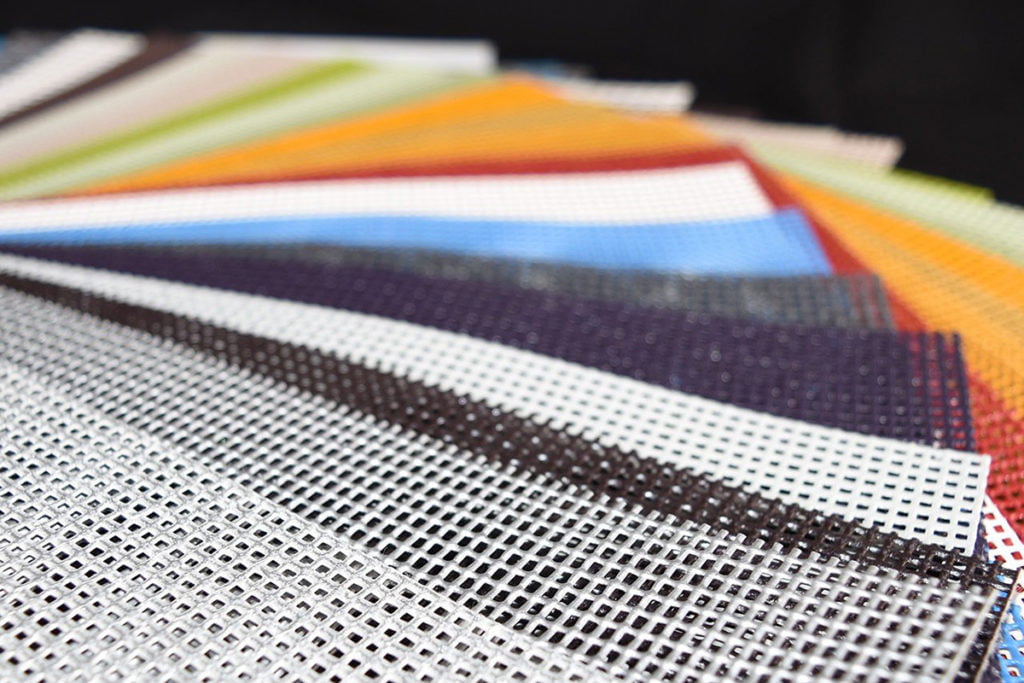
Standardized Deployment Process
The Fabric Facade heat-resistant implementation process includes standardized technical stages:
- Energy Survey and Analysis: Evaluate the building's specific climate conditions, sun exposure, and insulation requirements to determine optimal design parameters for the Fabric Facade.
- Structural Design and System Selection: Detailed design of the support frame system (usually stainless steel or aluminum alloy) and fabric tensioning system, ensuring the ability to withstand wind loads and other environmental factors according to technical standards.
- Processing and Preparation: Fabric panels are cut and welded precisely at the factory according to design drawings, ensuring uniform size and tension.
- Installation and Alignment: Install the frame system and stretch the facade fabric at the construction site. The stretching process is carefully carried out to ensure the fabric surface is flat, wrinkle-free and can withstand the load.
- Check and Finish: Test the entire system for durability, drainage, and insulation efficiency before handover.
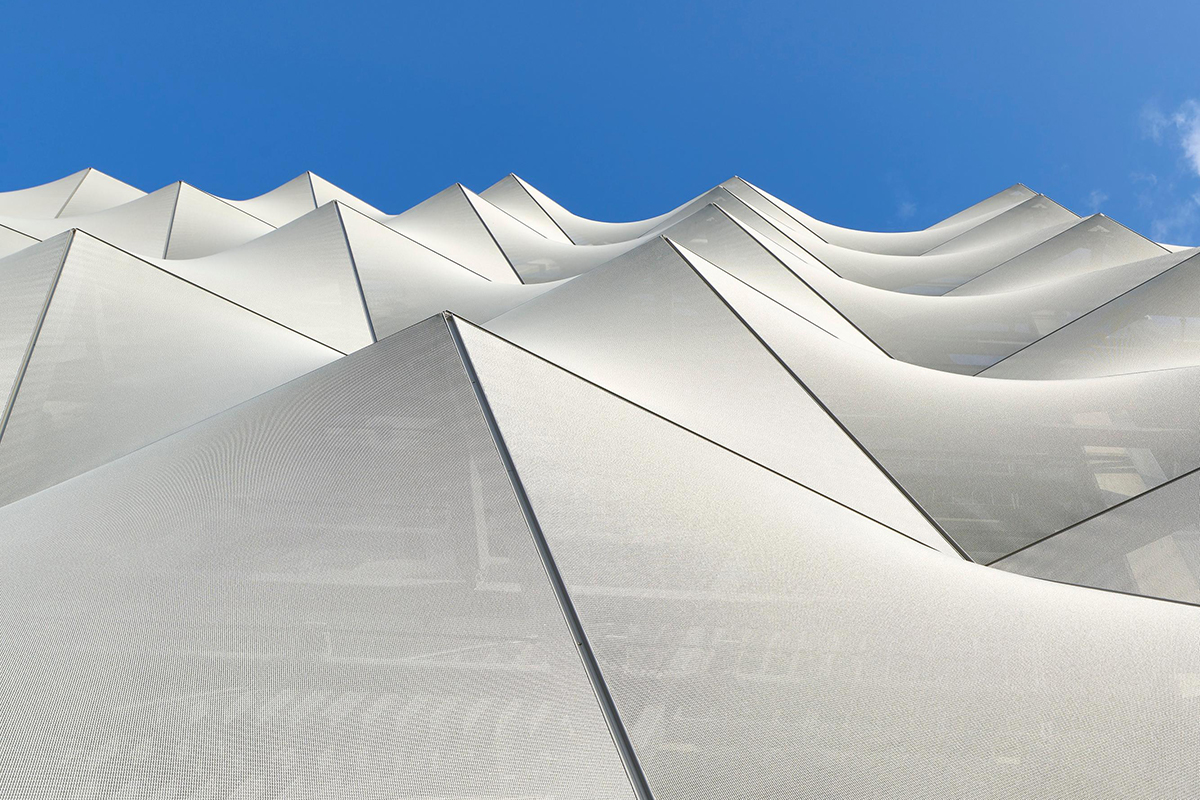
Results and Performance Evaluation
The application of heat-resistant Fabric Facade brings about obvious technical and effective results:
- Reduce surface and interior space temperatures: Actual measurements show that the heat-resistant Fabric Facade is capable of reducing the temperature inside the building by 5-10 degrees Celsius compared to traditional facades under the same environmental conditions.
- Energy saving air conditioning: The reduced heat output significantly reduces the power consumption of the HVAC (Heating, Ventilation, and Air Conditioning) system, resulting in operating cost savings of 20-40% depending on the size and conditions of the building.
- Protection of interior materials: The ability to block UV rays and reduce direct heat radiation helps protect interior finishes and furnishings from aging and damage.
- Improve indoor environmental quality: Stable temperature and fresher air contribute to creating a more comfortable and convenient living and working space for users.
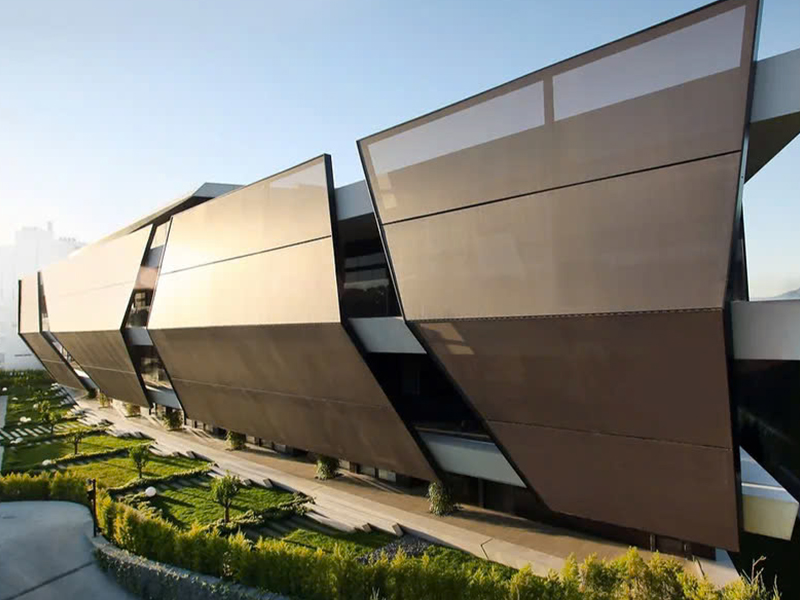
Contact Technical Consulting
Flexiiform is a professional unit in consulting, designing and constructing Fabric Facade heat-resistant solutions for various types of projects. We are committed to providing optimal technical solutions, ensuring quality, progress and energy efficiency for your project.
To receive in-depth advice on heat-resistant Fabric Facade applications or other facade solutions, please contact us:
Flexiiform Company Limited
Website: https://flexiiform.vn/
Phone: 0867 868 830
Email: [email protected]



